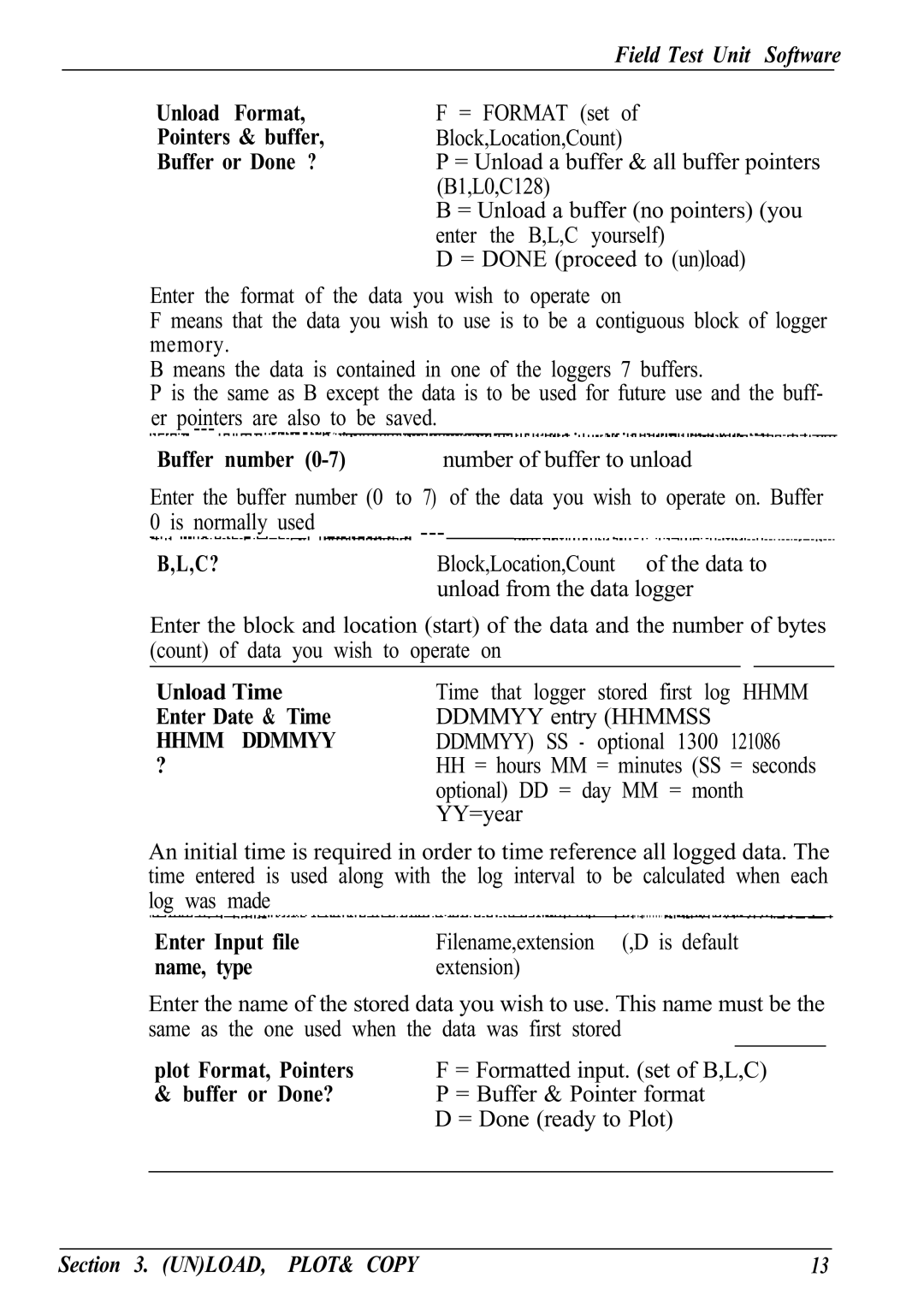
Field Test Unit Software
Unload Format, Pointers & buffer, Buffer or Done ?
F = FORMAT (set of
Block,Location,Count)
P = Unload a buffer & all buffer pointers (B1,L0,C128)
B = Unload a buffer (no pointers) (you enter the B,L,C yourself)
D = DONE (proceed to (un)load)
Enter the format of the data you wish to operate on
F means that the data you wish to use is to be a contiguous block of logger memory.
B means the data is contained in one of the loggers 7 buffers.
P is the same as B except the data is to be used for future use and the buff-
er pointers are also to be saved. | . | . | ||||
. | . |
| ||||
Buffer number | number of buffer to unload | |||||
Enter the buffer number (0 | to 7) | of the data you wish to operate on. Buffer | ||||
0 is normally used |
|
| . |
| ||
B,L,C? |
|
|
|
| ||
|
| Block,Location,Count | of the data to | |||
|
|
| unload from the data logger | |||
Enter the block and location (start) of the data and the number of bytes (count) of data you wish to operate on
Unload Time | Time that logger stored first log HHMM |
Enter Date & Time | DDMMYY entry (HHMMSS |
HHMM DDMMYY | DDMMYY) SS - optional 1300 121086 |
? | HH = hours MM = minutes (SS = seconds |
| optional) DD = day MM = month |
| YY=year |
An initial time is required in order to time reference all logged data. The
time entered is used along | with the log interval to | be calculated when each | |
log was made |
| .. ....... | . |
. |
| ||
Enter Input file | Filename,extension | (,D is | default |
name, type | extension) |
|
|
Enter the name of the stored data you wish to use. This name must be the same as the one used when the data was first stored
plot Format, Pointers F = Formatted input. (set of B,L,C)
&buffer or Done? P = Buffer & Pointer format D = Done (ready to Plot)
Section 3. (UN)LOAD, PLOT& COPY | 13 |
